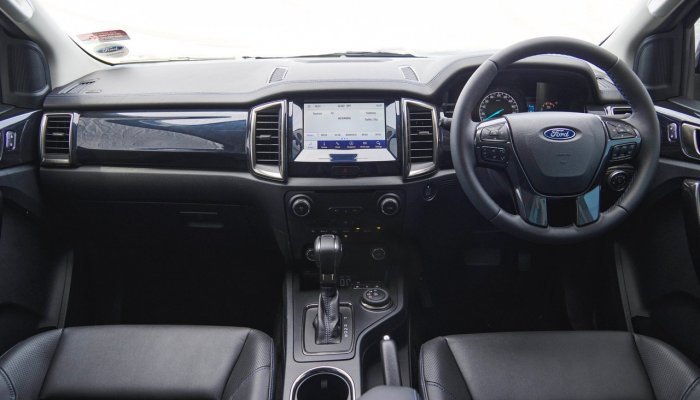WHAT IS IT?
The Ford Everest has been around for a while now, and it mirrors the successful recipe that Toyota employs with the Fortuner: a comfortable seven-seater SUV on a bakkie chassis. The Sport adds to the appealing Everest package with some premium exterior and interior styling enhancements.
WHY THIS?
These big seven-seat, bakkie-based SUVs make so much sense, especially when looking at what you get for your money. Of course, as with most things, there is a compromise, but in this case, the compromise is minimal, and it comes with so many practical benefits.
OUTSIDE
The Everest Sport is imbued with a few flash features that its less trendy stablemates do without: a black mesh grille and a unique Everest badge on the bonnet, along with black mirror caps and door handles. There's a bit more black treatment on the lower edge of the front and rear bumpers, roof rails and the black 20-inch wheels. Sport decals on the rear doors finish off the exterior changes.
INSIDE
The Sport is a cut above the already well-equipped XLT model and features niceties such as embossed leather seats with distinctive blue stitching and soft-touch leather for the dashboard, eight-way electric adjustment for the driver’s seat, keyless entry and start, cruise control and front and rear park sensors with a rear-view camera. The sound system features an 8-inch touchscreen display, voice control and sat-nav, and can be integrated with a smartphone via Apple CarPlay or Android Auto.
And because the Everest is a family car, it has seven airbags in addition to a host of active safety systems, including Electronic Stability Programme with traction control, Trailer Sway Control, Hill Launch Assist and Roll Over Mitigation.
THE DRIVE
The 'Sport' in the name refers to the appearance, while the mechanicals of the Everest remain unchanged. Power is courtesy of a 2.0-litre single turbo diesel engine, delivering 132kW and 420Nm – with up to 340Nm available from just 1,250rpm. This is mated to Ford’s sophisticated 10-speed automatic transmission, and the combination delivers in terms of fuel efficiency and all-round performance. Every now and again, though, the transmission seems to have too many choices and doesn’t know which one to go for, so it changes back and forth unnecessarily.
One thing that may look good but doesn't make sense is the 20-inch rims. Compared to other Everests and Everest competitors, the Sport suffers from an unduly harsh ride, and the low-profile tyres also limit the practical application of the vehicle as an off-roader, even the 4x4 version.
FINAL WORD
The Everest is probably the most complete of the SUV-on-bakkie brigade, with its car-like drivability, smooth engine and usable space, and the Sport model has made it even better in many respects. The huge wheels bother me, but I'll be in the minority there. Personally, I'd stick with the 4x2 model.
GO GET IT
At R686,600, the Everest Sport 4x2 is a very good buy, and the 4x4 version at R728,400 is also fair value, although the huge wheels detract from the point of buying the 4x4 over the 4x2. All Everest models come standard with Ford Protect, comprising a 4-year/120,000km comprehensive warranty, 3-year/unlimited distance roadside assistance and 5-year/unlimited kilometre corrosion warranty. A 6-year/90,000km service plan is included, with 15,000km service intervals.











